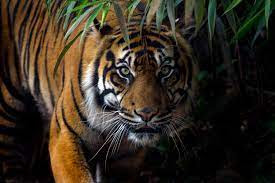Woodpecker Fowl
Woodpecker Fowl
Woodpecker, any of about 180 species of birds that constitute the subfamily Picinae (authentic woodpeckers) of the circle of relatives Picidae (order Piciformes), referred to for probing for bugs in tree bark and for chiseling nest holes in deadwood. Woodpeckers occur almost international, besides in the location of Australia and New Guinea, but are maximum abundant in South the us and Southeast Asia. Maximum woodpeckers are resident, however some temperate-sector species, including the North American yellow-bellied sapsucker (Sphyrapicus varius) and the flicker (genus Colaptes), are migratory.
Maximum woodpeckers spend their complete lives in bushes, spiraling up the trunks searching for insects; only the few floor-feeding forms are able to perching on horizontal branches, as passerine birds do. Most woodpeckers consume insects, but a few (specially Melanerpes species) feed on fruits and berries, and sapsuckers regularly feed on sap from sure timber in a few seasons. In spring the loud calls of woodpeckers, regularly augmented by using drumming on hole wood or on occasion on steel, are the sounds of males conserving territories; at different seasons woodpeckers are generally silent. Most aren't social, tending as a substitute to be solitary or to tour in pairs.
The acorn woodpecker (M. Formicivorus) is about 20 cm (8 inches) lengthy and is observed from the deciduous woodlands of western North the us south to Colombia. It depends on acorns for wintry weather meals, storing a supply in holes it drills within the bark of bushes. The purple-headed woodpecker (M. Erythrocephalus) is roughly the equal length (19–23 cm [7.5–9 inches]) as the acorn woodpecker, however it's miles in moderation disbursed in open woodlands, farmland, and orchards of temperate North the us east of the Rocky Mountains.
Well-known species of Dendrocopos include the downy woodpecker (D. Pubescens), best about 15 cm (6 inches) long and inhabiting the woodlands and gardens of temperate North america; the excellent spotted woodpecker (D. Foremost), approximately 23 cm (9 inches) long and discovered from the forests and gardens of western temperate Eurasia south to North Africa; and the furry woodpecker (D. Villosus), which is 20–25 cm (8–nine.Eight inches) long and observed in temperate North the united states.Dryocopus consists of two well-known species: the black woodpecker (D. Martius), which is some 46 cm (18 inches) long and is found in coniferous and beech woodlands of temperate Eurasia, and the pileated woodpecker (D. Pileatus), which is some 40–forty seven cm (15.5–18.25 inches) in length and inhabits mature forests of much of temperate North america.
Species of 3-toed woodpeckers make up the genus Picoides: the northern 3-toe (P. Tridactylus), which tiers across the subarctic Northern Hemisphere and south in some mountains, and the black-sponsored three-toe (P. Arcticus), determined across forested primary Canada.
The crimson-sponsored woodpecker (Chrysocolaptes lucidus) is not unusual in open woodlands from India to the Philippine Islands. The green woodpecker (Picus viridis) degrees for the duration of the woodlands of temperate Eurasia and south to North Africa. The deciduous forests of the southeastern america are the habitat of the pink-bellied woodpecker (Centurus carolinus).
The ivory-billed woodpecker (Campephilus principalis), stated for its size (45 cm [18 inches] long) and splendor, was historically found in Cuba and the southern united states. Despite the fact that indexed as seriously endangered, it was believed to be extinct. In 2005, but, researchers introduced that the hen were sighted in jap Arkansas. A subspecies, the Cuban ivory-billed woodpecker (C. Principalis bairdii), is concept to be extinct, and a related species, the imperial woodpecker (C. Imperialis) of Mexico, is critically endangered and likely extinct.




Comments
Post a Comment